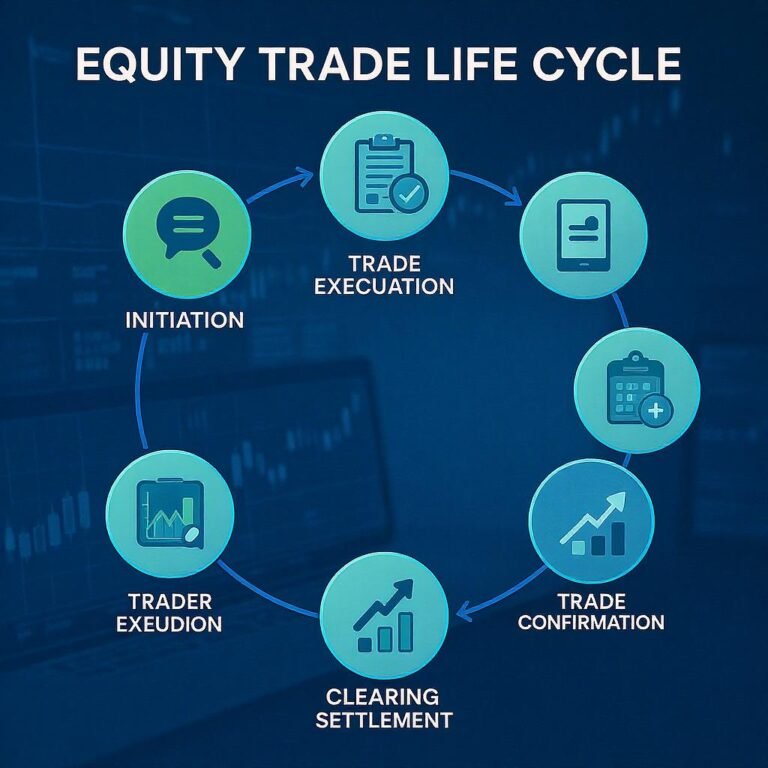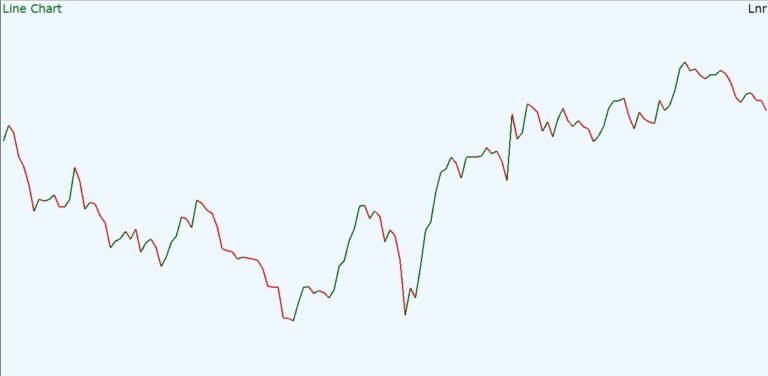
The capital market in India is where long-term funds are raised and traded. It includes equity (stocks) and debt (bonds, debentures) instruments. In simple terms, the capital market brings together companies seeking funds and investors with savings. As SEBI explains, the capital market is “a market for long-term debt and equity shares” where funds comprising equity and debt are issued and traded.
Capital markets play a vital role in India’s economy by mobilizing savings and channeling them into productive investments. Households and institutions can invest in companies, while businesses can raise money for expansion. This raises capital for businesses and creates wealth for investors. For example, by buying shares or bonds, investors can earn returns, and companies use the funds to grow their operations and hire more people. Over time this fuels economic development. This broad market can be divided into two segments – the primary market (new issues) and the secondary market (trading of existing securities).this fuels economic development.
Primary and Secondary Markets
Primary Market (New Issue Market Or IPO Market): This is where companies issue new securities (stocks or bonds) to raise fresh capital. When a company goes public through an IPO (Initial Public Offering) or issues bonds/debentures, it happens in the primary market. Investors subscribe directly to the new securities, and the company gets the funds. In the primary market, the issuing company is the seller and the capital (money) goes to the company.
Secondary Market: Once securities have been issued, they trade among investors in the secondary market. This is the familiar stock exchange (e.g. on NSE or BSE) trading. Investors buy and sell existing shares and bonds with each other. Crucially, trades in the secondary market do not raise new funds for the company; instead, they provide liquidity. For investors, it means the ability to sell shares whenever they need cash. Stock exchanges (order-driven markets) and over-the-counter markets facilitate this trading and help with price discovery. The secondary market thus ensures that investors can enter and exit positions, making the capital market efficient and dynamic.
Participants in Capital Markets
Main key participants are:
- Companies (that issues equity shares and/or bonds)
- Investors – retail investors (individuals), institutional investors (mutual funds, insurance companies, pension funds), foreign institutional investors (FIIs/FPI), etc.; and
- Intermediaries – stock brokers, merchant bankers (investment banks underwriting new issues), registrar and transfer agents, depository participants (for demat accounts), etc. Click here to know about Intermediaries.
- The Government and RBI are also participants – the Government issues sovereign bonds (G-Secs) and the RBI regulates debt markets. All these players interact under the rules set by the regulator (SEBI) to facilitate the issuance and trading of securities.
Financial Instruments
India’s capital markets trade a variety of instruments. Common ones include:
Equity Shares (Stocks):
Ordinary shares represent ownership in a company. Shareholders bear the business risk and may receive dividends (What is dividend?). They also get voting rights in company affairs. As SEBI explains, equity shares “represent the form of fractional ownership” in a company, with shareholders entitled to the company’s profits and voting. The main stock exchanges (NSE, BSE) list thousands of equity shares.
Preference Shares:
These are hybrid instruments. Preference shareholders get a fixed dividend before common shareholders and have priority on assets in case of liquidation. Unlike bonds, preference shares are technically equity, but they behave like debt.
Debentures / Corporate Bonds:
These are debt instruments issued by companies to borrow money. A debenture or bond is essentially an IOU: the investor lends money to the company, which promises periodic interest and repayment of principal on maturity. Debentures are often secured against company assets, whereas bonds may be unsecured.
Government Securities (G-Secs):
These are bonds issued by the Indian government (through RBI) to fund government borrowing. They are considered virtually risk-free (backed by the sovereign). G-Secs can be short-term (Treasury bills up to 1 year) or long-term (Government Bonds up to 30 years).
Mutual Funds and ETFs:
While not direct securities, mutual fund schemes and ETFs (exchange-traded funds) pool investors’ money to buy diversified portfolios of stocks/bonds. They are important ways for individuals to participate in capital markets with smaller amounts.
Each instrument has different risk/return and tax characteristics. Investors choose based on their goals (e.g. growth vs. steady income) and risk appetite.
Role of SEBI
The Securities and Exchange Board of India (SEBI) is India’s capital market regulator. Established in 1992, SEBI’s mandate is to protect investor interests and regulate securities markets. It frames rules for issuing securities (mandating disclosures in IPOs), registers and supervises intermediaries (brokers, mutual funds, portfolio managers), and oversees exchanges, depositories, and rating agencies. In particular, SEBI ensures fair trading practices: it monitors for insider trading, price manipulation, and other malpractices, and takes enforcement actions against violators. In short, SEBI maintains market integrity and investor confidence through regulation and education.
Major Indian Stock Exchanges
- National Stock Exchange (NSE)
- Bombay Stock Exchange (BSE)
Both exchanges are fully electronic (order-driven) and have similar trading hours (9:15 am–3:30 pm IST). The BSE’s Sensex index tracks the top 30 companies on BSE, while NSE’s Nifty 50 index covers 50 large-cap stocks. The Bombay Stock Exchange (BSE) building on Dalal Street is an iconic landmark of India’s financial center.
How to Participate as an Investor In Capital Market
Anyone can participate in India’s capital markets subject to KYC (Know Your Customer) norms. A beginner typically follows these steps:
- Open Accounts: Every investor needs three accounts: a bank account (to transfer funds), a trading account (with a SEBI-registered broker to place buy/sell orders), and a Demat account (to hold securities electronically with a depository participant of NSDL/CDSL). The trading account connects you to the exchange; the demat account (Open your demat account) holds your shares/bonds in digital form like a bank holds cash. Most brokers offer both trading and demat services. SEBI regulations cap brokerage charges and mandate that all securities be dematerialized, eliminating old paper share certificates
- Fund Your Account: Transfer money from your bank to the trading account. This will be used to buy stocks/bonds. Once funds are in place, you can log into the broker’s trading platform (online or app).
- Place Orders: Using the trading platform, investors can place market orders (buy/sell at current market price) or limit orders (set a specific price) for any listed security. Orders go to the exchange’s order book, which matches buyers and sellers. After a trade is executed, the purchased securities appear in your demat account and money (minus brokerage and taxes) moves accordingly.
- Invest Wisely: Beginners are advised to start cautiously. One common approach is to invest in mutual funds or index funds. For example, a Systematic Investment Plan (SIP) lets you invest a fixed small amount (even ₹500/month) in an equity mutual fund regularly. This “rupee cost averaging” strategy builds wealth over time without timing the market. It suits beginners who lack time to pick individual stocks. Otherwise, if buying stocks directly, start with well-known companies (blue-chip), diversify across sectors (so one poor-performing stock doesn’t hurt everything), and consider setting stop-loss orders to limit potential losses.
- Stay Informed and Patient: Before buying any stock or bond, research the company’s business and track records. Attend investor awareness programs, read company filings, and follow market news. Beware of rumors or “hot tips.” Novices should focus on long-term goals rather than short-term trading. Using a disciplined plan (like SIPs) or investing in diversified portfolios helps reduce risk.
🧾 Conclusion: Understanding Capital Markets in India
The capital market is the backbone of a nation’s financial system, and in India, it plays a crucial role in mobilizing savings and channeling them into productive investments. Through the primary market, companies raise fresh capital, while the secondary market allows investors to trade existing securities and maintain liquidity.
With institutions like SEBI, NSE, and BSE, India’s capital markets are transparent, regulated, and increasingly accessible to both retail and institutional investors. From equity shares and debentures to mutual funds and government securities, the market offers a range of instruments suited for different goals and risk levels.
For beginners and intermediate traders, it’s important to:
- Understand how markets work,
- Use proper risk management,
- Start with diversified or index-based investments,
- Avoid speculative decisions,
- Focus on long-term financial goals.
Whether you’re looking to grow wealth through SIPs or take a more active approach with stock selection, a solid foundation in capital market basics can help you make informed and confident investment decisions. Always keep learning, stay updated, and invest wisely.
⚠️ Disclaimer
The information provided in this guide is for educational and informational purposes only. It does not constitute financial, investment, or legal advice. Trading and investing in capital markets involve risks, including the risk of loss of capital. Past performance is not indicative of future results.
You are advised to do your own research or consult with a certified financial advisor or SEBI-registered investment professional before making any investment decisions. The examples and strategies mentioned are for illustrative purposes and may not suit your personal financial situation.
The author and publisher are not responsible for any losses or damages resulting from the use of this information.



